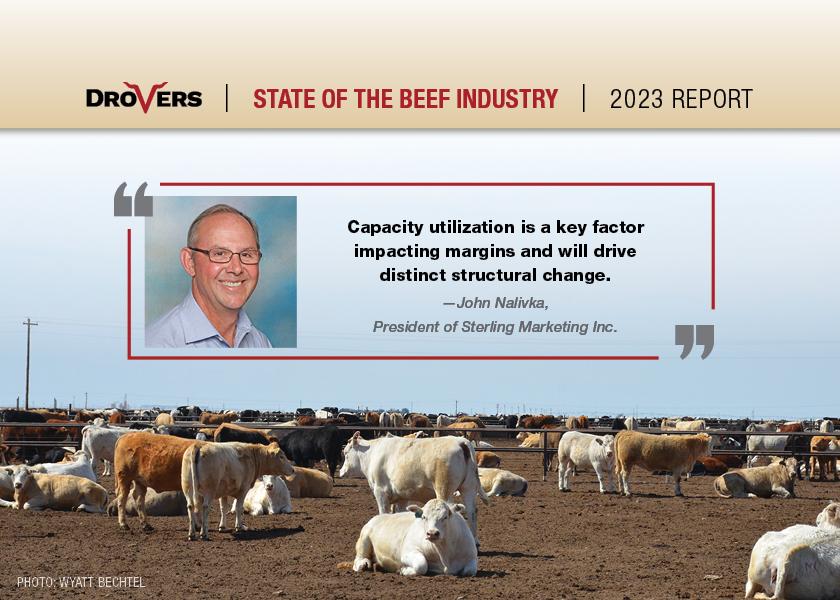Short Supply and Structural Shifts In Focus: 2023 State Of The Beef Industry

Editor's Note: This article is the sixth in a series that comprise Drovers 2023 State of the Beef Industry. The full report will appear as a 16-page special section in the September 2023 issue.
The state of the U.S. beef industry in 2023 is strong. Drought-induced herd liquidation impacted the supply side, but an even greater impact occurred on the demand side.
U.S. consumers have shown a willingness to pay higher prices for beef which is key to market sustainability. As beef producers have improved their product over the past two decades, consumers have come to expect quality, consistency and safety, the three attributes supporting strong beef demand.
Structural Change
With the U.S. in an inflationary economic environment, consumer budgets might tighten. Even so, the beef industry is in a much better position today and that has not always been the case. While I believe beef demand has yet to be fully tested at these higher prices, the evidence supports the factors mentioned above that brought us to this point have had a greater impact than in the past.
While demand is strong, we must recognize supply and structural issues that will have a significant impact going forward. For instance, contrary to popular belief, the industry does not lack harvest capacity. Capacity use is a key economic factor that impacts margins and will be a factor driving distinct structural change through decisions made within individual firms (packers).
Utilization of slaughter capacity in fed beef plants averaged 81% across the industry in 2014/15. As cattle numbers increased, that figure rose to 88% from 2016 to 2022. Through July 2023, utilization averaged 85%, and with continued reduced fed cattle numbers in 2024, the figure will drop to 80% against current capacity. Cow plants averaged 92% utilization from 2016 to 2022 as herds were built and then liquidated due to drought. Through July 2023, that figure has fallen to 81% and could fall to 65% in 2024. There will be adjustments, with decisions directed toward managing and aligning slaughter capacity with value-added, case-ready products.
The production of case-ready products by packers has become the rule rather than the exception, and for good reason: margins and customer demand, both in retail and food service. Cattle producers must maintain their focus toward producing and marketing cattle — not selling, but marketing cattle — that meet the demand for beef in U.S. and global markets. This will be achieved through genetic improvement. The goal is for cattle producers to realize their share of the value chain through producing the right cattle for the right market, and 2023 is the starting point.







